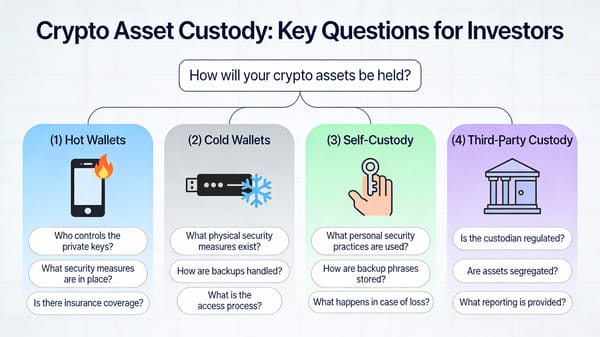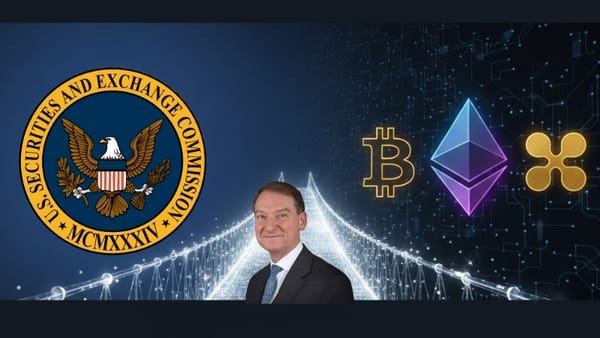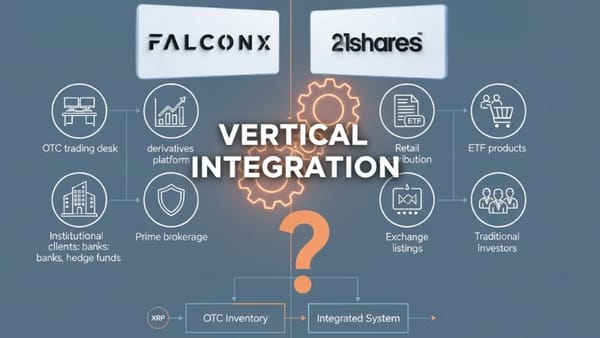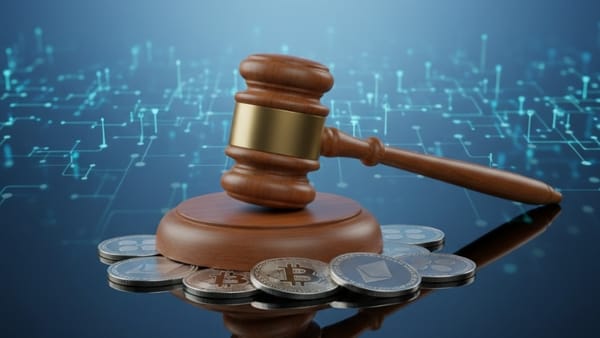Ripple's Corporate Treasury Gambit: Why the GTreasury Strategy Changes Everything
Ripple's $1B GTreasury acquisition marks a strategic pivot into corporate treasury management, connecting 800+ banks to blockchain infrastructure. This move could unlock enterprise adoption for XRP and position Ripple as essential corporate finance infrastructure.

Ripple's $1 billion acquisition of GTreasuryin isn't just another crypto company buying a fintech platform. It's the final piece in a $3 billion chess game that could fundamentally reshape how corporations move money globally. As industry analyst WrathofKahneman (@WKahneman) laid out in his detailed October 16th analysis, Ripple has quietly assembled a complete corporate finance stack—and the implications for both traditional finance and digital assets are profound.
Who is GTreasury and why does it matter?#Ripple's acquisition of GTreasury is a big leap forward and represents a clear direction for the future.
— WrathofKahneman (@WKahneman) October 17, 2025
A brief overview.
1/6 https://t.co/UvGlCkm3Bu
The $3 Billion Blueprint: Building the Bridge to Corporate Finance
Over the past two years, Ripple has systematically invested approximately $3 billion in acquiring companies that each solve a different piece of the corporate finance puzzle:
- Metaco ($250 million, 2023): Institutional-grade digital asset custody and orchestration technology
- Hidden Road ($1.25 billion, 2025): Prime brokerage and institutional trading infrastructure
- Rail ($200 million): Payment infrastructure connecting traditional and digital rails
- GTreasury ($1 billion, 2025): Treasury management software with 40+ years of banking relationships
As @WKahneman noted, "Ripple has spent ~$3b building a complete corporate finance stack. They can offer every layer between a corporate CFO's dashboard and on-chain settlement."
This isn't a collection of disparate businesses. It's a vertically integrated pipeline designed to do one thing exceptionally well: make it seamless for corporations to move from traditional treasury management into blockchain-based settlement without changing their workflow, training their staff, or abandoning their existing banking relationships.
Why Treasury Management Is the Strategic Chokepoint
The genius of Ripple's strategy becomes clear when you understand where GTreasury sits in the corporate finance ecosystem. GTreasury isn't consumer-facing software—it's the nerve center where CFOs and treasury departments at Fortune 500 companies make decisions about moving billions of dollars daily.
GTreasury integrates directly with major ERP systems like SAP, Oracle, and NetSuite, and maintains established relationships with over 800 banks worldwide. Their clients include JPMorgan, Goldman Sachs, Bank of America, Wells Fargo, and PNC Bank. The platform provides treasury professionals with visibility and control over cash across hundreds of accounts, multiple currencies, various subsidiaries, and complex counterparty relationships.
This creates what @WKahneman calls "direct access to the corporate global money movement." By controlling the interface where treasury decisions are made, Ripple can introduce blockchain settlement options at exactly the moment when a treasurer is deciding how to move $10 million from their Singapore subsidiary to their US headquarters. The question becomes: "Do you want to use the traditional two-day SWIFT process, or settle this in seconds using our integrated solution?"
The Banking Trojan Horse Strategy
Perhaps the most sophisticated aspect of Ripple's approach is how it leverages existing banking relationships rather than competing with them. GTreasury has already established critical partnerships that create natural pathways for Ripple's technology:
- Goldman Sachs Transaction Banking partnership for streamlined global payments
- PNC Bank's Pinnacle Connect embedded integration for instant banking data connectivity
- Fides global bank connectivity expanding reach to international financial institutions
- ClearConnect Gateway integration with PNC for automated data exchange
What makes this particularly strategic is that PNC Bank is already a RippleNet user, originally announced as using it for treasury management. @WKahneman highlights the "GTreasury announcement of an embedded integration with PNC through PNC Pinnacle, and that PNC is also a RippleNet user, originally announced as using it for treasury management."
This creates a closed loop: GTreasury provides the interface, PNC (and potentially other banking partners) provide the trust and regulatory compliance, and Ripple provides the settlement infrastructure. Corporations don't need to "adopt blockchain"—they simply get faster, cheaper settlement through their existing treasury management software and banking relationships.
The Regulatory Judo Move
Ripple's strategy also represents sophisticated regulatory positioning. Rather than fighting to convince regulators that cryptocurrency should be treated differently, Ripple is embedding itself so deeply within regulated financial infrastructure that it becomes part of the regulatory conversation from the inside.
By serving the treasury departments of major banks and corporations—the very institutions that regulators are designed to protect—Ripple transforms from a cryptocurrency company into a financial infrastructure provider. The GTreasury platform already operates within existing compliance frameworks, handles KYC/AML requirements, and works within the regulatory boundaries that govern corporate treasury operations.
This doesn't resolve Ripple's ongoing legal challenges, but it materially changes the context. A company providing mission-critical treasury management software to Fortune 500 companies and major banks is positioned very differently from a cryptocurrency startup, even if both are promoting the same underlying settlement technology.
The XRP Market Penetration Thesis
As @WKahneman pointedly asks: "I know, I know,…'but what about #XRP?' I will leave it to you to consider what the implications are for a company that was built around the #XRPL becoming embedded in corporate finance while holding 40% of the #XRP supply. It's important market penetration."
This is the strategic endgame. Ripple holds approximately 40% of the total XRP supply. If the company successfully embeds blockchain settlement into corporate treasury workflows through GTreasury's interface, and if XRP becomes even a small part of how corporations handle cross-border payments or currency conversion, the demand dynamics shift fundamentally.
Consider the math: Fortune 500 companies collectively manage trillions in cash positions. If GTreasury serves hundreds of these corporations, and Ripple can convert even 1% of their cross-border payment volume to XRP-based settlement, the resulting demand would be orders of magnitude larger than current retail trading volume.
The XRP Ledger's built-in decentralized exchange and automated market maker features provide the technical foundation for instant currency conversion. Integrated into GTreasury's platform, corporate treasurers could theoretically use XRP as a bridge currency for converting between fiat currencies in real-time, accessing better rates than traditional foreign exchange markets while settling in seconds rather than days.
From Disruption to Integration: The Maturation of Crypto Strategy
What Ripple is executing represents a fundamental shift in how blockchain technology approaches traditional finance. The early crypto narrative focused on disruption—replacing banks, eliminating intermediaries, creating parallel financial systems. Ripple's GTreasury strategy flips this entirely.
Instead of replacement, Ripple offers integration. Instead of asking corporations to abandon their banks, Ripple works through those banking relationships. Instead of requiring treasury departments to learn blockchain technology, Ripple hides the blockchain layer beneath familiar interfaces and workflows.
This is infrastructure-layer innovation rather than user-experience disruption. The corporate treasurer doesn't need to know or care that their payment is settling on the XRP Ledger any more than they need to understand SWIFT's messaging protocols. They just know their payment arrived faster and cost less.
@WKahneman's analysis reveals the sophistication of this approach: "Ripple can bring #RLUSD & #XRP settlement options into existing treasury workflows. A co could move funds across subsidiaries, currencies, or counterparties instantly, w/ changing."
The Competitive Moat and Network Effects
By assembling custody (Metaco), trading infrastructure (Hidden Road), payment rails (Rail), and now the treasury management interface (GTreasury), Ripple has created something that would be extraordinarily difficult for competitors to replicate.
Each acquisition strengthens the others. GTreasury clients need custody solutions for digital assets—Metaco provides that. They need liquidity and trading—Hidden Road delivers it. They need connectivity between traditional and digital payment systems—Rail bridges that gap. And all of it flows through the GTreasury interface that treasury professionals already use daily.
The network effects compound as more corporations adopt the integrated stack. Each additional bank partnership makes GTreasury more valuable. Each additional corporate client using XRP settlement increases liquidity. Each successful implementation reduces risk perception for the next potential customer.
Ripple's extensive partner ecosystem through GTreasury provides established channels to major banks and ERP providers that would take competitors years to develop from scratch.
The Questions That Remain
Strategic brilliance doesn't guarantee execution success. Integrating blockchain settlement into conservative corporate treasury operations—where reliability and regulatory compliance are paramount—presents significant challenges.
Corporate treasurers are famously risk-averse. A failed payment or compliance violation can end careers. Convincing these professionals to route actual corporate funds through blockchain-based systems, even if hidden beneath familiar interfaces, requires flawless execution and sustained reliability.
The regulatory environment remains uncertain. While Ripple's integration strategy provides better positioning, ongoing legal challenges and evolving cryptocurrency regulation could constrain how aggressively the company can promote XRP-based settlement to corporate clients.
Technical integration complexity shouldn't be underestimated. Connecting 40 years of legacy treasury management code with blockchain settlement systems, while maintaining existing bank integrations and ERP connections, represents a massive engineering challenge.
The Strategic Inflection Point
Whether Ripple's corporate treasury strategy succeeds or fails, it represents the most sophisticated attempt yet to bridge institutional finance and blockchain technology. By investing $3 billion to acquire not just technology but established relationships, regulatory positioning, and trusted interfaces, Ripple has created the conditions for blockchain settlement to reach corporate finance on corporate finance's terms.
@WKahneman concludes his analysis by noting the significance: "It's important market penetration." For a company built around the XRP Ledger, embedding itself into the daily operations of corporate treasury departments while holding 40% of the XRP supply creates a unique strategic position.
The next 12-24 months will reveal whether this $3 billion bet pays off. If Ripple successfully introduces blockchain settlement to even a fraction of GTreasury's corporate clients, it could catalyze the institutional adoption wave that cryptocurrency advocates have predicted for years. If execution falters or regulatory obstacles prove insurmountable, it becomes an expensive lesson in the difficulty of bridging traditional and digital finance.
But the strategic thesis is sound: control the interface where decisions are made, leverage existing trust relationships, hide complexity beneath familiarity, and make adoption the path of least resistance. Whether in corporate treasury or any other market, that's how infrastructure-layer technologies achieve ubiquity.
DISCLAIMER: This newsletter is for informational purposes only and does not constitute investment advice, advertising, or a recommendation to buy, sell, or hold any securities. This content is not sponsored by or affiliated with any of the mentioned entities. Investments in cryptocurrencies or other financial assets carry significant risks, including the potential for total loss, extreme volatility, and regulatory uncertainty. Past performance is not indicative of future results. Always consult a qualified financial professional and conduct thorough research before making any investment decisions.
Sources
- Business Wire - Ripple Breaks Into Corporate Treasury With $1B GTreasury Acquisition
- GTreasury - Ripple Acquires GTreasury
- GTreasury - Goldman Sachs Transaction Banking Partnership
- GTreasury - Fides Global Bank Connectivity Partnership
- GTreasury - PNC Bank Pinnacle Connect Integration
- GTreasury - PNC Bank ClearConnect Gateway Integration
- GTreasury Partners Page
- Hidden Road - Ripple Acquisition Announcement
- X/Twitter - @WKahneman Analysis Thread on Ripple's GTreasury Acquisition (October 16, 2025)



